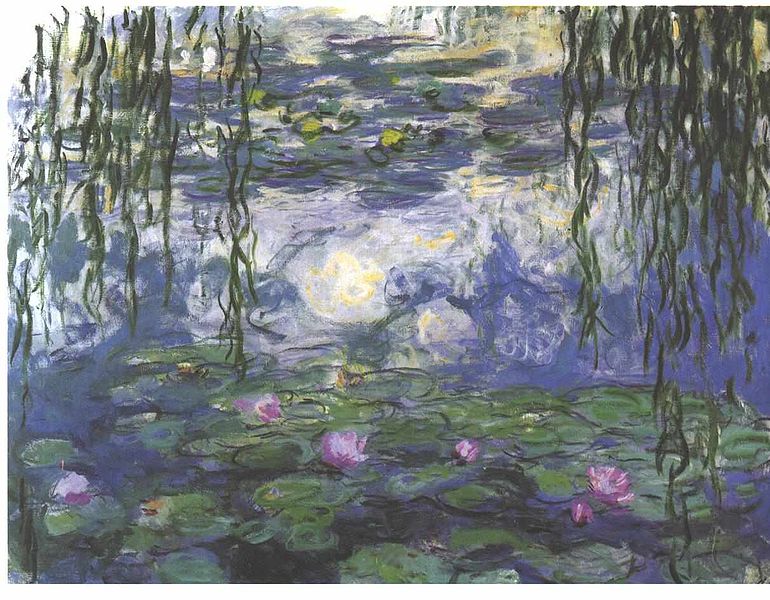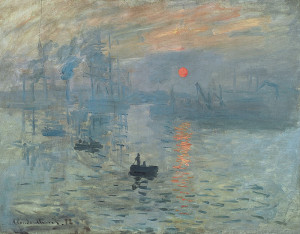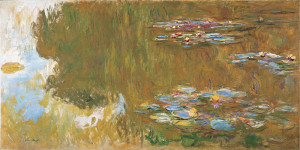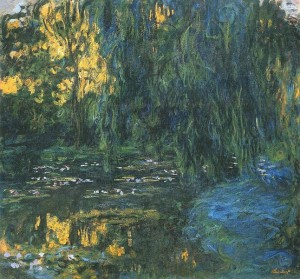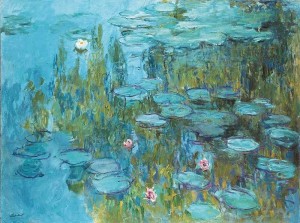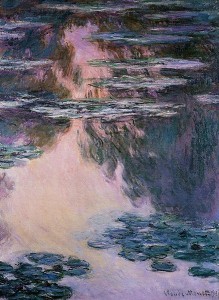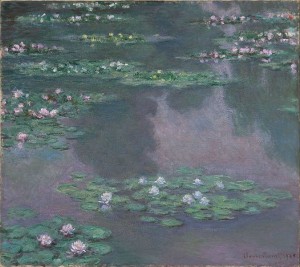Even if you don’t know about any artists, you’ve probably heard of Claude Monet. He is considered to be the founder of Impressionist painting in France; in fact, the technique’s name itself came from Monet’s painting, Impression, Sunrise:
Monet loved to paint the French countryside, and he tended to paint the same scene again and again in order to capture the light as it changed. As indeed the light was different in each moment in which he painted it, so too each painting was strongly unique. Most famous are his Water Lilies paintings, a series which includes about 250 scenes. A few are shown here:
This series of paintings took him twenty years to complete.
The first Impressionist exhibit took place in 1874. Its purpose was to liberate artists from such strict expectations of what was considered to be art at the time. It came out of an anonymous society of artists who wished to work independently, since the Académie des Beaux-Arts was not accepting of the new style. Monet had the help of Renoir, who did most of the work of hanging the art. The show included works by Degas and Renoir, both well-known Impressionist painters.
Impressionism was characterized by an understanding of light and the way it played on objects. It was about seeing the interaction between colors and bringing those variations to life. Impressionism was to be about color and light, not shapes. It was to capture spirit and not simply the exterior solid appearance.
Monet was born on November 14, 1840 in Giverny, France.
